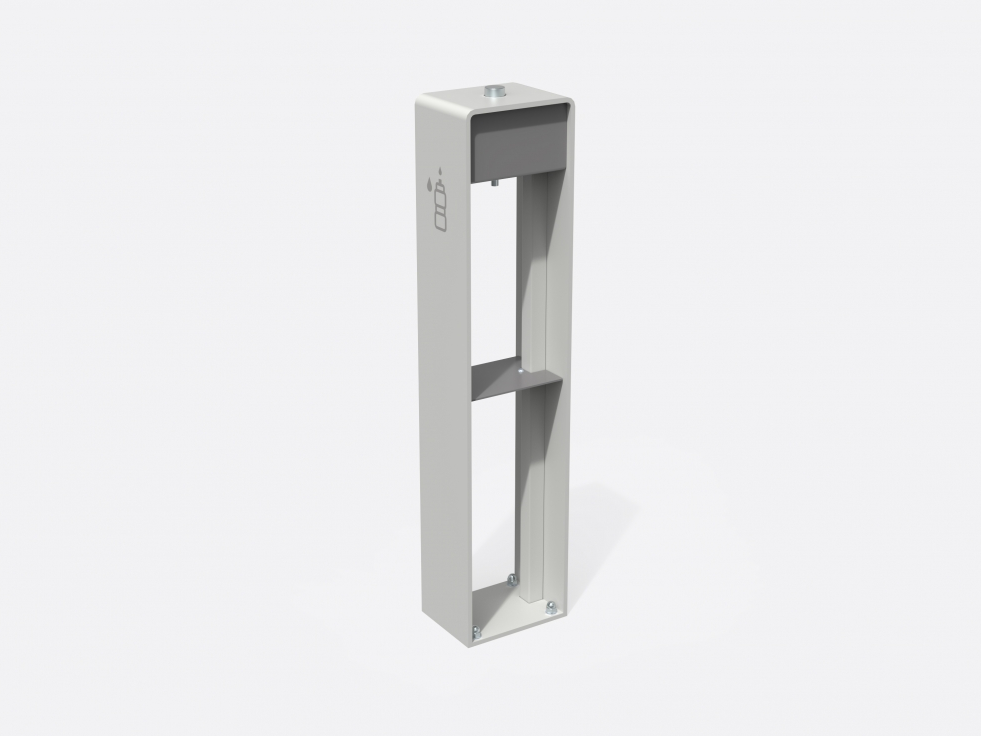Drinking water in Public Spaces

Drinking water fountains, in various forms, can be an essential addition to the experience and functionality of public spaces, not only in cities but also in municipalities.
They promote sustainability, improve livability, and offer inclusive solutions for all users.
Let’s take a closer look at the benefits of drinking water fountains and how they can help create more accessible, sustainable, and multifunctional public spaces in both urban and rural environments.
Sustainability in Public Spaces
One of the greatest applications of drinking water fountains is providing safe and drinkable water to passersby and users of public spaces. They are also often used to supply water for other purposes, such as filling watering cans in cemeteries, where rainwater is reused in this way.
Drinking water fountains in public spaces can be much more than just a source of drinkable water; they encourage reuse and reduce disposable plastic bottles, especially by encouraging people to refill their own water bottles. This is particularly important for athletes, cyclists, and walkers who can easily access fresh water during their activities.
Drinking water fountains come in all shapes and colors, from timeless designs to functional modern styles, offering a solution for every type of public space. Many cities have been using the timeless Atlantida drinking water fountains by Urbidermis by Santa & Cole for years, but also the Linea by Larus Design, and the more modern Carmel by Escofet, are well-suited to enhance a wide range of projects. The more recent models are often equipped with integrated bottle fillers, allowing users to quickly and easily refill their reusable bottles.
The public domain is one of the most demanding environments for urban furniture. Elements are often pushed to their limits by users, not to mention vandalism. For these reasons, it is necessary to produce drinking water fountains with weather-resistant and vandal-resistant designs and materials. Another important aspect is the hygiene of the water fountains; they must be easy to clean periodically in a quick and simple manner and be prepared for winter to avoid damage caused by freezing temperatures. In short, the choice of a suitable drinking water fountain is determined not only by its functionality, design, and material but also by ease of maintenance.
For both cities and municipalities, the implementation of these fountains not only offers a solution to the plastic waste problem but also raises awareness of sustainability. Especially in summer, when water consumption increases, these fountains ensure that people are not dependent on bottled water, helping to reduce the waste generated.
Inclusive Designs for Accessible Public Spaces
In addition to sustainability, inclusivity plays a key role in the placement of drinking water fountains. Not only must these fountains be accessible to pedestrians, but they must also accommodate people with reduced mobility and other vulnerable groups. The Hydra L by Larus Design and the Caudal by Urbidermis are designed with inclusivity in mind, featuring low spouts and wide buttons, allowing people in wheelchairs to use them with ease. These products are ideal for busy public spaces such as parks and sports grounds, where access to water must be guaranteed for everyone.
In this context, it is important to view drinking water points not only as a health provision but also as a cooling oasis during hot summer days and heatwaves. Municipalities can strategically place these fountains in busy areas to improve access to water and provide refreshment to their residents. This increases the functionality of public spaces, especially in the summer months when hydration is essential.
Drinking Water for Dogs and Pets
Pets should not be forgotten in the design of public amenities. Drinking water fountains such as the Dogman and Hydra S are equipped with special lower-level spouts to allow dogs to easily access water. This additional functionality makes parks and recreational areas more attractive to families and dog owners.
Adding drinking points for pets makes public spaces more versatile and meets the needs of a wide range of users. This ensures that municipalities serve not only human users but also cater to their four-legged companions.
A Functional and Attractive Public Space for All
Municipalities and cities can integrate drinking water fountains into their designs for various types of public spaces. Not only do they meet the growing demand for sustainable and inclusive solutions, but they also contribute to improving the livability of both urban and rural environments. The strategic placement of these fountains helps reduce waste, encourages reuse, and provides cooling during warm periods.
Want to know more about drinking water fountains? Be sure to check out our page on drinking water in public spaces for more detailed information and examples of successful implementations.













